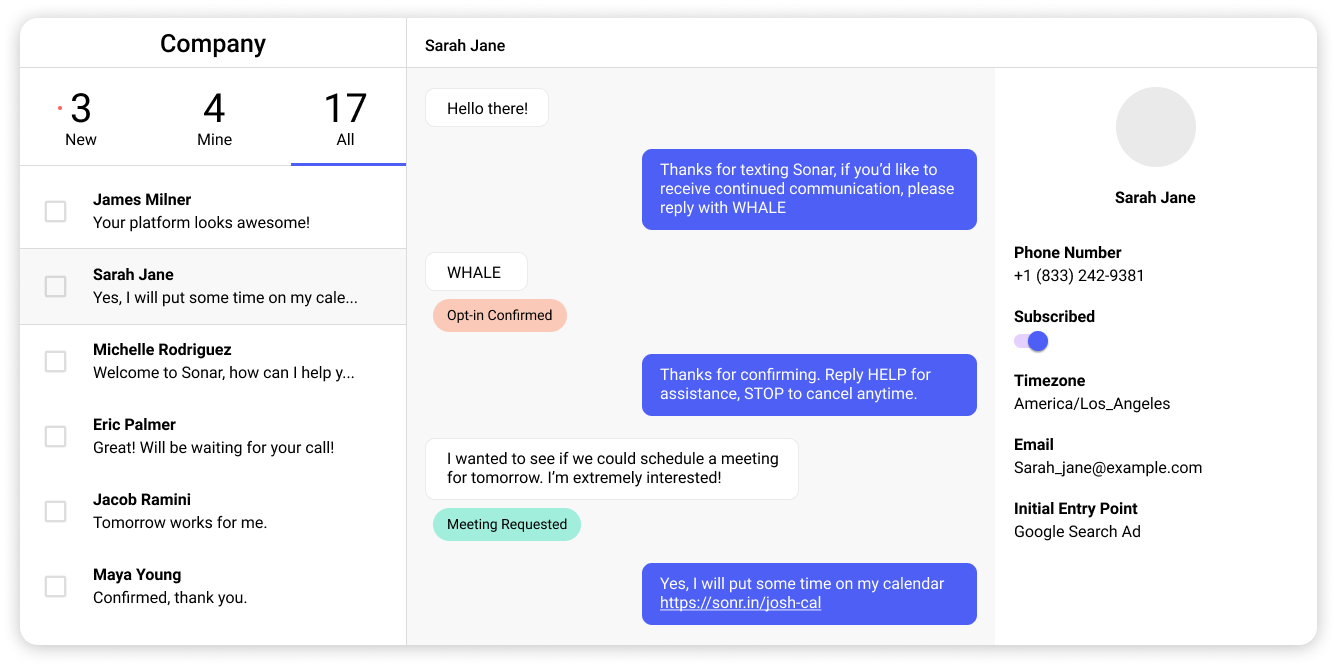As customer communication channels evolve, many businesses seek to implement intuitive, easy, and engaging communication strategies. As 2020 brought a myriad of lifestyle changes, the ways customers wanted and expected to connect with businesses also changed. Businesses that chose to adapt during a time of immense uncertainty ultimately grew closer with their customers and communities. Based on these observations, we’ve developed some business texting trends and recommendations for digital communication in 2021.
#1: Personalization is Key
Successful businesses thoughtfully crafted messages for each segment of their customer base. This kind of personalization results in greater loyalty and long-term satisfaction. According to Forrester’s 2021 B2C Marketing Predictions, optimized and automated campaigns enable “B2C marketers [to] get better campaign performance even while operating with reduced staff.” When brands communicate with empathy and personalization, customers are much more likely to want to stay in touch and form a relationship.
#2: Messaging with a Purpose
As people grow accustomed to directly messaging brands, marketers and salespeople have more opportunities to engage throughout the customer journey. According to eMarketer, global business text messaging increased by 10% during 2020 to 2.7 trillion messages. Go beyond notifications and consider a variety of message types that help your customers, including reminders, payment assistance, educational content, technical support, and more. Texting isn’t just one-way; it’s an opportunity for nuanced, two-way conversations.

#3: Increased Value on Privacy
Despite comfort with text messaging, customers are increasingly protective of their online privacy. Early in 2020, Google announced its plans to end support for third-party cookies by 2022. While customers appreciate the convenience of business text messaging, they also expect transparency and the ability to opt out. Companies must always ask for permission to communicate and provide clear instructions for signing up and unsubscribing.
#4: Communicate on the Local Level
One of the biggest trends of 2020 was an increased demand for housing outside of urban centers. As people adjusted to working remotely, they sought more space and lower prices. As a result, tailored messaging based on a specific location became even more important. Brands that reference specific local events, trends, and even regional jokes can build relationships as people adjust to different living environments.
#5: Creativity Goes A Long Way
Lastly, we’ve seen firsthand how creative communication yields the most responses from customers. Automating and segmenting messages is just one piece of the puzzle; it’s critical to also create compelling content that provides value. In April 2020, The Wall Street Journal highlighted a company that delivered uplifting audio and video messages via text. This kind of individualized and creative content can strengthen customer relationships and brand identity.
There are other ways in which businesses can best use SMS messaging that includes Sales, Field Communications, Marketing, & Service. Texting not only supports the revenue side of your business but also internal communications. See how Marchex Sonar can accelerate lead qualification, conversions, and communication with prospects, customers, and field staff.
Interested in learning how you can integrate text messaging into your 2021 communication strategy? Get in touch with our team.




